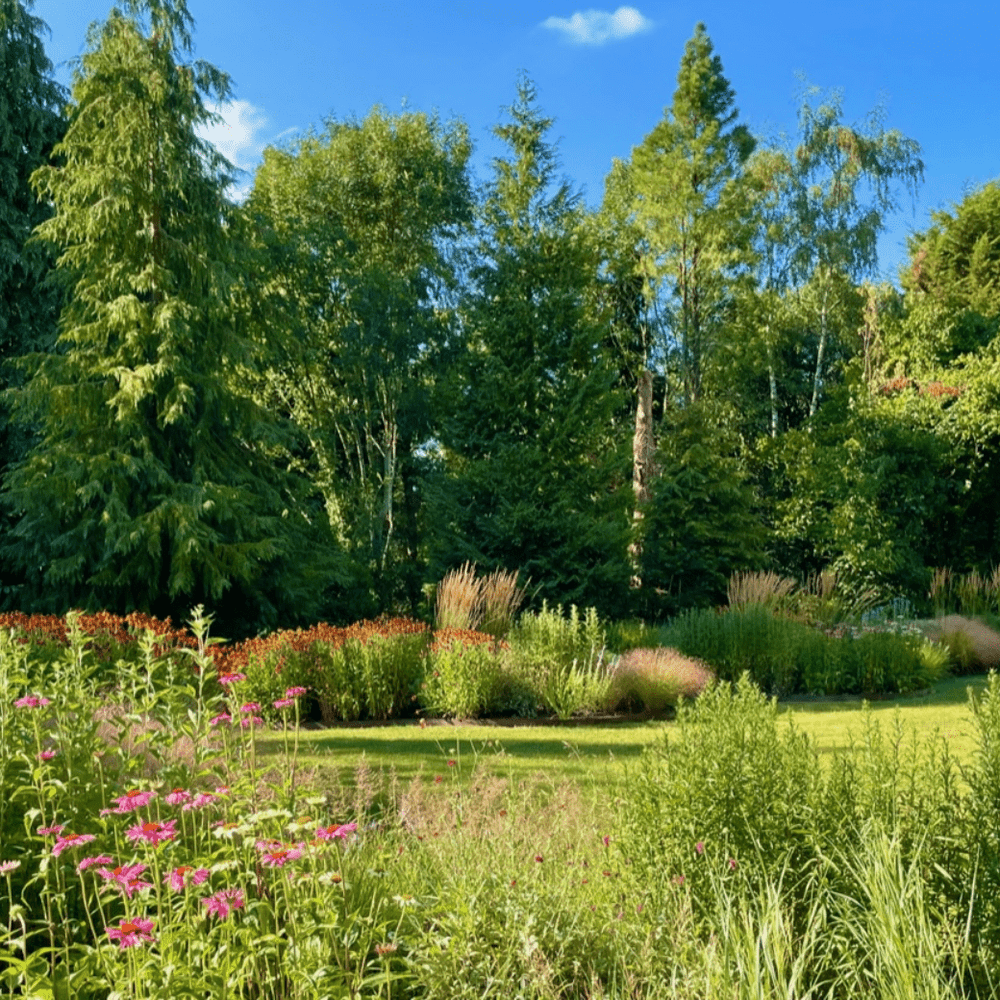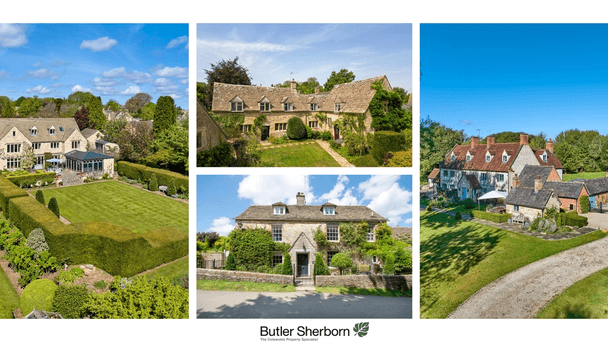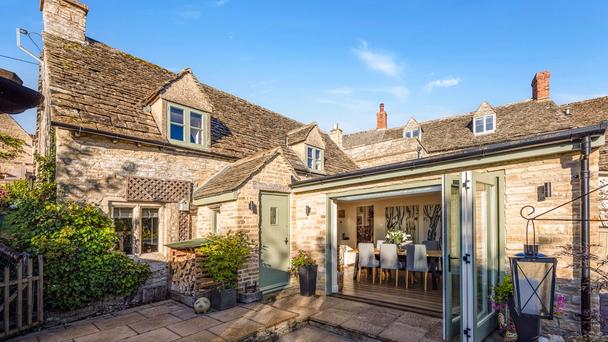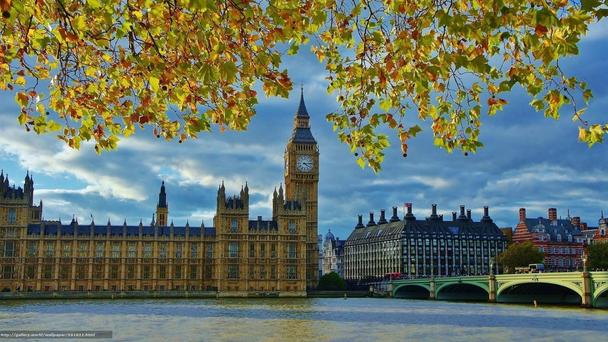
Top tips for designing a classic English garden

An English garden is a beautiful sight to behold. Traditionally, it conjures up the idea of soft pink roses, tumbling honeysuckle, winding paths and an overall sense of countryside chocolate box charm.
However, the term can also incorporate larger landscapes that are made up of sweeping lawns, ponds and lakes. Creating your own perfect garden can be a little harder than it looks, especially with the changeable British weather.
You shouldn’t let that put you off, however. Gardening can be an incredibly enjoyable hobby, giving you a sense of reward and accomplishment when you see things growing successfully. It can also keep you fit and healthy, and can especially boost mental health, with research showing that gardening can lift self-esteem and mood.
In this post, we look at the elements that make up a classic English garden and explain how you can replicate them at home.
What defines an English garden?
In comparison to a formal garden with elaborately shaped hedges, a classic English garden focuses on working in harmony with nature, rather than trying to control it. As a result, the planting focuses on perennials like hydrangea and phlox, annuals such as cosmos and pansies, as well as a variety of roses and shrubs. Herbs and vegetables are also common components, often scattered in with ornamental planting, or in raised beds.
Hedges, trees, grass and paths are often used to divide up sections of the garden. They tend to be softly shaped rather than kept in rigid lines. The Walled Garden at Cerney House Gardens, near Cirencester is a beautiful example of this, demonstrating how borders and paths can blend together.
How can you create a classic English garden at home?
Make the most of your space
The borders in English gardens tend to be deep, and stuffed full of beautiful plants, organised in layers so that the tall plants go at the back, to avoid overshadowing the tiny ones. This gives the garden a sense of being full, and means that smells from scented plants mix together, hitting your senses as you enter the space.
However, this does have the issue that many of the plants that you might expect to have will die back in the winter months, making the garden look bare. This is just part of the seasonal nature of the garden, but it can be worth carefully considering your plant choice to ensure you have some shape and colour year-round. The cottage garden at Highgrove House in Tetbury is a great demonstration of planting for consistent colour.
Create an experience
Your garden should be an interesting space, encouraging visitors to walk around and discover something new as they go. Adding in small sculptures, water features, a pergola and classic wooden seating will make your garden seem more inviting. Try to focus on mimicking natural colours and materials in order to create a seamless effect.
Create zones
You can use paving or gravel to guide the visitor around your garden, and use archways or hedging to create a sensation of moving from zone to zone. Paths should be kept as natural as possible – think stone or brick, rather than concrete – and hedging should be tidy. Some gardeners do choose to manicure their hedges and trees into cones or pyramids (topiary) but simply establishing and keeping neat lines also works. If you are aiming for a cottage garden style, keep hedging under control, but avoid shaping it to get a natural, wild aesthetic.
With a bit of work, you can create your own English garden to enjoy all year round.
Butler Sherborn are currently selling two houses close to lovely gardens -
Butlers Farm, Colesbourne, Gloucestershire Guide Price £2,350,000 An appealing five bedroom period farmhouse, barn, stables and paddocks. In all circa 5.59 acres. It is close to Colesbourne Park Gardens https://www.colesbournegardens.org.uk/
To view Butlers Farm, contact Sophie Lane on 01285 883740
https://www.butlersherborn.co.uk/colesbourne/nid3019
Bickerstaff, Shipston -on-Stour, Warwickshire Guide Price £1,650,000 A attractive family house, with detached stable block and established gardens. Hidcote Manor Gardens is close by and well worth a visit.
https://www.nationaltrust.org.uk/visit/gloucestershire-cotswolds/hidcote
To view Bickerstaff, contact Phoebe Roberts on 01451 830731
https://www.butlersherborn.co.uk/shipston-stour/nid3173

Christmas In The Cotswolds
In December, the Cotswolds transforms into a festive wonderland, packed with Christmas events and festivities. Glide across the ice, sip wine at an award winning vineyard, sing along to carols, watch the town lights turn on, browse late-night shopping evenings, get creative at seasonal workshops, enjoy festive storytelling with Giffords Circus, and feel the thrill of Christmas racing at Cheltenham Racecourse.
Christmas In The Cotswolds
2025’s Best Sold Properties: Reflecting on an Exceptional Year of Sales
As 2025 draws to a close, Butler Sherborn is proud to reflect on what has been an incredibly successful year across the Cotswolds property market. Despite wider economic headwinds, demand for high-quality Cotswold homes has remained resilient, with buyers continuing to prioritise location, lifestyle and long-term value.
2025’s Best Sold Properties: Reflecting on an Exceptional Year of Sales
Market Comment
Despite the understandable inertia created by the Autumn Budget, November delivered a notably strong performance for Butler Sherborn, with over £11 million of quality Cotswold properties successfully sold. Buyer motivation was high throughout the month, with one in three viewings converting to an offer - the national average is about 10 viewings per offer.
Market Comment
Our Take on The Autumn Budget
The Chancellor, Rachel Reeves, delivered Labour’s long-awaited Autumn Budget this afternoon. In recent months, speculation has been rife about significant changes to Stamp Duty Land Tax (SDLT) and even the possible abolition of Principal Private Residence Relief for Capital Gains Tax (CGT) when...
Our Take on The 2025 Budget





